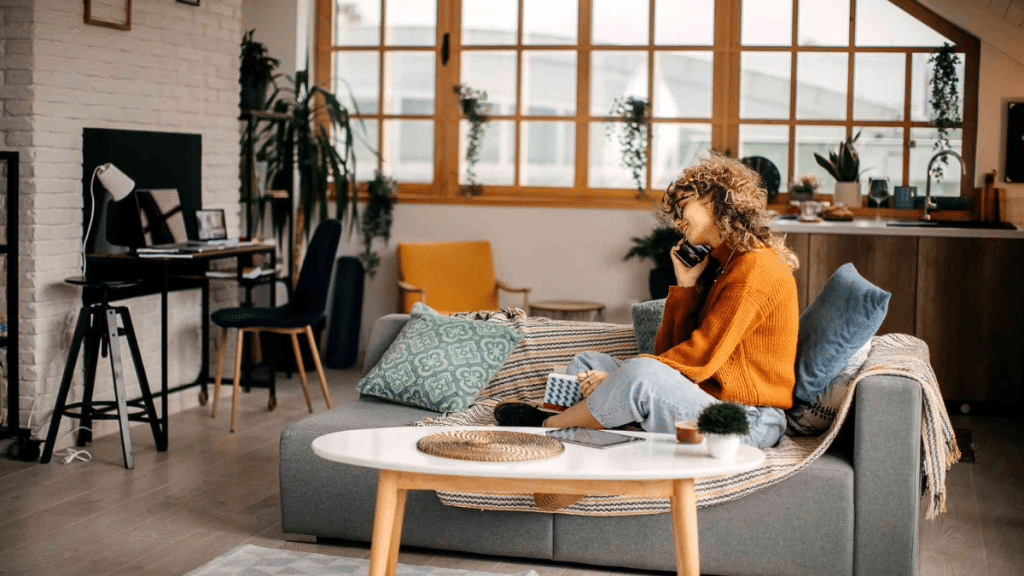Designing Your Home for Wellness
The spaces we live in have a powerful effect on our overall well-being. A home that’s clean, well-lit, and thoughtfully organized can encourage healthier habits, reduce stress, and support both mental and physical health. Creating a healthy living space doesn’t require a complete remodel or endless spending. It’s about making intentional choices that promote comfort, relaxation, and vitality. With a few smart adjustments, you can transform your home into a place that nourishes you every single day.
Maximizing Natural Light
Natural light is one of the simplest yet most effective ways to improve your home’s atmosphere. Sunlight not only boosts mood but also helps regulate sleep patterns and supports vitamin D production. To maximize natural light, keep window treatments light and airy, use mirrors to reflect brightness, and avoid placing large furniture in front of windows. If your home has areas that naturally feel dark, consider adding skylights or using light-colored paint to help bounce light around. Spending time in well-lit rooms can make you feel more energized and focused throughout the day.
Improving Indoor Air Quality
Breathing clean air at home is essential for your health. Poor indoor air quality can contribute to allergies, headaches, and fatigue. One easy step is to add air-purifying plants like snake plants, spider plants, or peace lilies, which naturally filter certain toxins. Opening windows regularly allows fresh air to circulate, while using high-quality air filters in your HVAC system can further reduce dust and pollutants. Avoiding harsh chemical cleaners and opting for natural alternatives can also make a big difference in keeping your air cleaner.
Incorporating Mindful Design Elements
The way you arrange and decorate your home can influence how you feel in it. Decluttering reduces visual stress and helps you focus, while keeping only meaningful or useful items makes your space more personal and calming. Choosing soothing colors, soft textures, and comfortable furniture can create a sense of relaxation. Even small touches like a cozy reading nook or a meditation corner can serve as daily reminders to slow down and recharge. Mindful design is about crafting spaces that encourage you to live intentionally.
Creating Active Spaces at Home
Staying physically active is easier when your home supports movement. You don’t need a full gym: simple additions like resistance bands, a yoga mat, or a set of free weights can make it easier to fit exercise into your day. A dedicated space for stretching, practicing yoga, or doing bodyweight workouts can keep you consistent. For some homeowners, active living extends outdoors, with options like gardens, walking paths, or even pool construction in Charleston to encourage both exercise and relaxation. The goal is to integrate activity naturally into your daily routine so it feels less like a chore.
Designing for Restful Sleep
A healthy home also supports quality rest. Your bedroom should be a place where you can truly unwind. Start by keeping electronics to a minimum and reducing light and noise. Blackout curtains, comfortable bedding, and a supportive mattress all contribute to better sleep. Calming colors such as soft blues, muted greens, or gentle neutrals can help signal to your mind that it’s time to relax. Good sleep hygiene, supported by the right environment, is one of the most powerful tools for maintaining overall health.
Bringing Nature Indoors
Connecting with nature has proven benefits for both mind and body, and you can bring some of that outdoors feeling inside. Houseplants not only improve air quality but also add life and vibrancy to your rooms. Natural materials like wood, stone, and cotton bring warmth and texture. Even artwork featuring landscapes or botanical themes can help you feel more connected to nature, which can reduce stress and improve mood.
Balancing Technology Use
Technology is a big part of modern living, but too much of it can have a negative impact on well-being. Creating tech-free zones in your home, like the dining area or bedroom, can encourage more face-to-face interaction and better rest. Organizing cords, minimizing screen clutter, and keeping devices stored away when not in use can make your home feel calmer. By controlling how and where technology is used, you can maintain a healthier balance between digital and offline life.
A Home That Supports Your Best Self
A healthy living space is one that helps you feel good physically, mentally, and emotionally. From letting in more light to improving air quality, from creating active zones to designing areas for rest, every choice you make contributes to your overall well-being. By being intentional about your home’s design and function, you can create an environment that not only looks beautiful but also helps you live a healthier, more balanced life every day.
